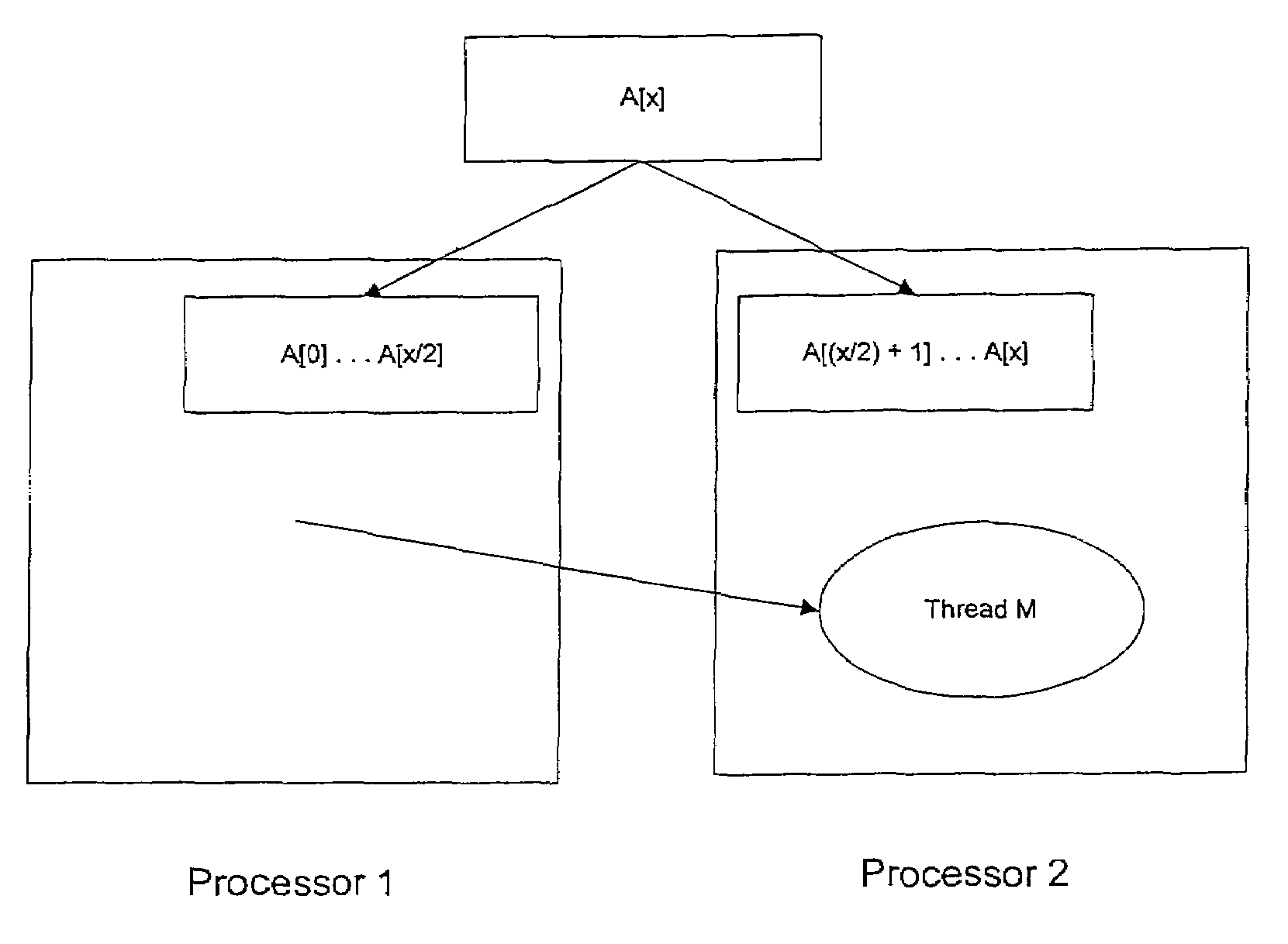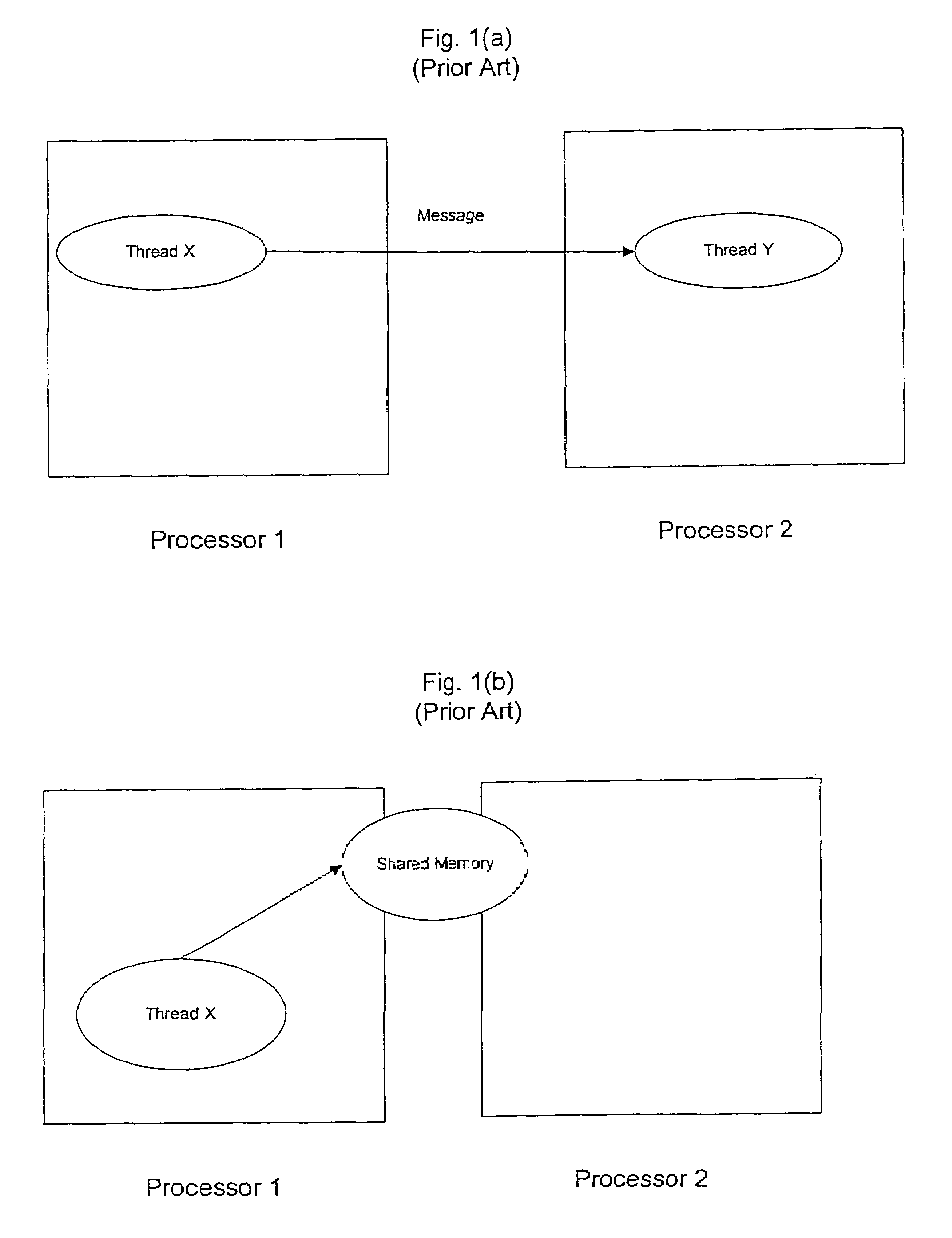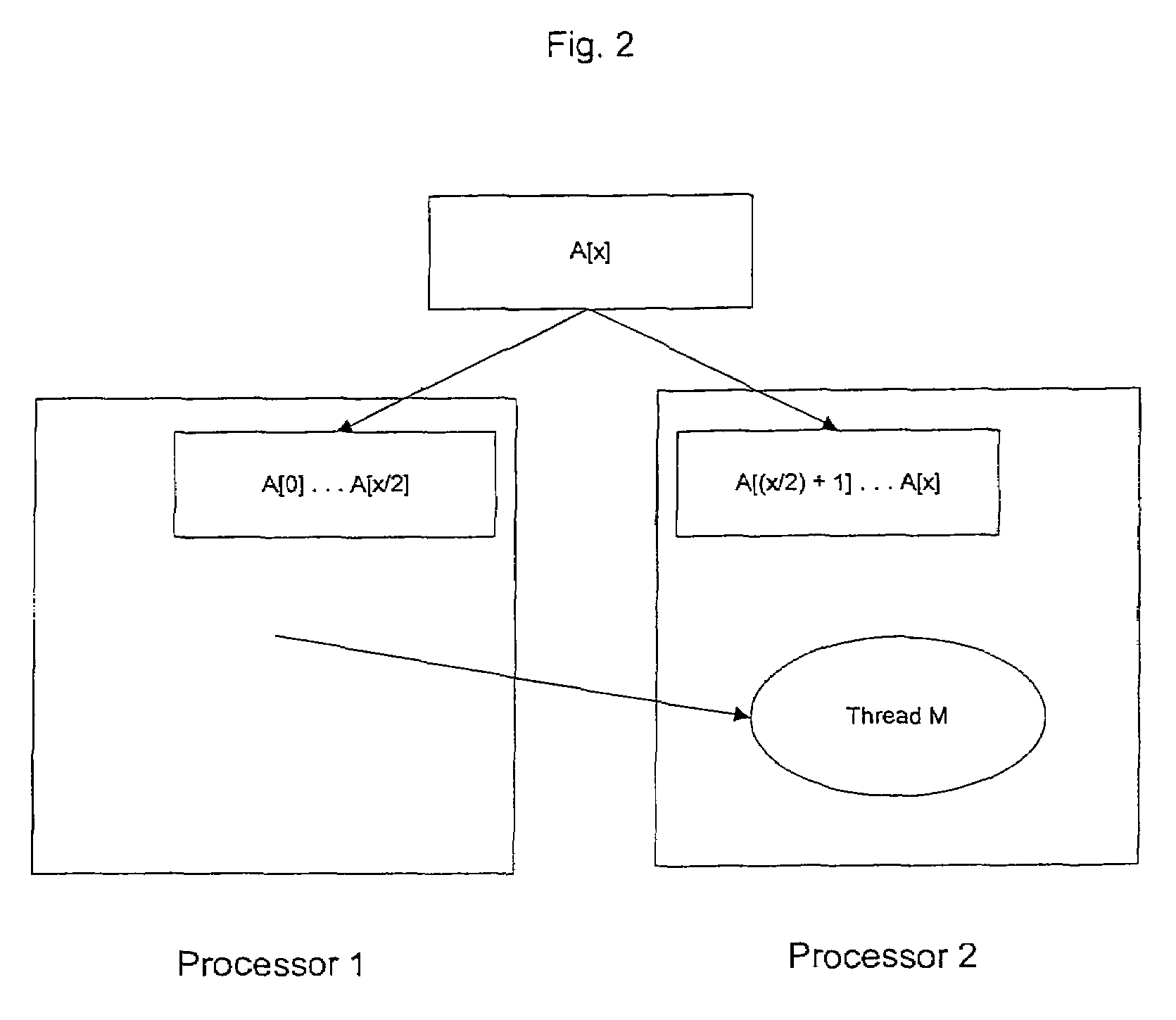Systems and methods for parallel distributed programming
a distributed programming and system technology, applied in the field of computer programming, can solve the problems of the complexity of the software application that operates on multiple processors and uses multiple memory areas, and the loss of many original characteristics of the code structure and data structure of the mp-based program
- Summary
- Abstract
- Description
- Claims
- Application Information
AI Technical Summary
Problems solved by technology
Method used
Image
Examples
Embodiment Construction
[0020]Methods and systems for developing sequential or parallel applications, such as high performance numerical computing, bioinformatics, database, transaction-based, and Internet applications, on distributed memory systems, shared memory systems, and systems that incorporate both distributed and shared memory systems, will now be described. Some examples of the systems are multi-processor supercomputers, clusters, networks of workstations (“NOW”), the Grid, and the Internet.
[0021]An approach to developing sequential or parallel applications in accordance with a preferred embodiment of the present invention, referred to as “navigational programming,” includes the programming and use of self-migrating threads or tasks, which are threads or tasks that can migrate from one processor to another. These self-migrating threads or tasks may be in the form of mobile agents with strong mobility. The approach is illustrated in FIG. 2. These self-migrating threads may be programmed explicitly...
PUM
 Login to View More
Login to View More Abstract
Description
Claims
Application Information
 Login to View More
Login to View More - R&D
- Intellectual Property
- Life Sciences
- Materials
- Tech Scout
- Unparalleled Data Quality
- Higher Quality Content
- 60% Fewer Hallucinations
Browse by: Latest US Patents, China's latest patents, Technical Efficacy Thesaurus, Application Domain, Technology Topic, Popular Technical Reports.
© 2025 PatSnap. All rights reserved.Legal|Privacy policy|Modern Slavery Act Transparency Statement|Sitemap|About US| Contact US: help@patsnap.com



